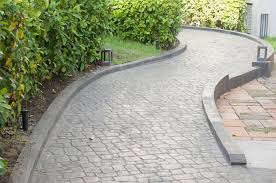Stamped concrete is a popular choice for homeowners and businesses in downtown San Jose looking to combine durability with aesthetic appeal. This versatile material can mimic the look of brick, stone, tile, or even wood, offering a range of design possibilities. Whether you’re considering stamped concrete downtown san jose for a patio, driveway, or walkway, this guide will help you understand the benefits, planning process, and installation steps.
Why Choose Stamped Concrete?
- Aesthetic Appeal: Stamped concrete can replicate high-end materials at a fraction of the cost, enhancing your property’s curb appeal.
- Durability: It withstands heavy traffic and harsh weather conditions, making it ideal for urban environments.
- Low Maintenance: Unlike natural stone or brick, stamped concrete requires minimal upkeep.
- Customization: Available in various colors, patterns, and textures to match your design vision.
Planning Your Stamped Concrete Project
- Purpose and Area: Determine where you want to install stamped concrete and its intended use. This will influence the design and material choices.
- Design Selection: Choose from a variety of patterns (e.g., cobblestone, slate, brick) and colors to complement your property’s style.
- Local Regulations: Check San Jose’s building codes and obtain any necessary permits before starting your project.
Designing Your Stamped Concrete
- Patterns and Textures: Select patterns that mimic natural materials like stone, brick, or wood. Consider the texture that best suits the area’s functionality (e.g., slip-resistant surfaces for walkways).
- Colors: Use integral coloring, dry-shake color hardeners, or surface-applied coloring agents to achieve the desired hue.
- Borders and Accents: Add decorative borders or contrasting patterns to create visual interest and define spaces.
Installing Stamped Concrete
- Preparation:
- Site Preparation: Clear the area of debris and vegetation. Excavate to the required depth, ensuring a stable and level subgrade.
- Base Layer: Lay a gravel base (4-6 inches) and compact it thoroughly to provide a solid foundation.
- Forming:
- Construct Forms: Use wooden or metal forms to outline the project area. Ensure they are level and securely anchored.
- Reinforcement: Place rebar or wire mesh within the forms to strengthen the concrete.
- Pouring the Concrete:
- Mix and Pour: Mix concrete to the correct consistency and pour it into the forms. Spread it evenly with rakes or shovels.
- Coloring: Apply color hardener to the surface and work it into the wet concrete with a float. For integral color, mix it into the concrete before pouring.
- Stamping:
- Apply Release Agent: Apply a release agent to the concrete surface and stamps to prevent sticking.
- Stamping Process: Begin stamping once the concrete has reached the right plasticity. Align the stamps and press them firmly into the surface. Use a tamper to ensure even depth.
- Pattern Consistency: Carefully lift the stamps and align them for the next section, maintaining consistent pattern depth and alignment.
- Curing:
- Cover and Cure: Protect the stamped concrete with plastic sheeting or curing compound to retain moisture. Allow it to cure for the recommended period.
- Control Joints: Cut control joints to prevent cracking as the concrete expands and contracts.
- Sealing:
- Clean and Dry: Ensure the surface is clean and dry before applying the sealer.
- Sealant Application: Apply a high-quality sealer to enhance the color and protect the surface from stains, chemicals, and weather damage.
Maintaining Stamped Concrete
- Regular Cleaning: Sweep and wash the surface regularly to remove dirt and debris.
- Sealant Maintenance: Reapply the sealer every 2-3 years to maintain the protective barrier and vibrant appearance.
- Crack Repair: Promptly repair any cracks to prevent further damage and maintain the integrity of the stamped concrete.
Conclusion
Stamped concrete is an excellent choice for adding style and functionality to your downtown San Jose property. With its durability, low maintenance, and endless design possibilities, it’s a smart investment for enhancing outdoor spaces. By following these planning and installation steps, you can create beautiful stamped concrete surfaces that will impress for years to come.

Leave a Reply